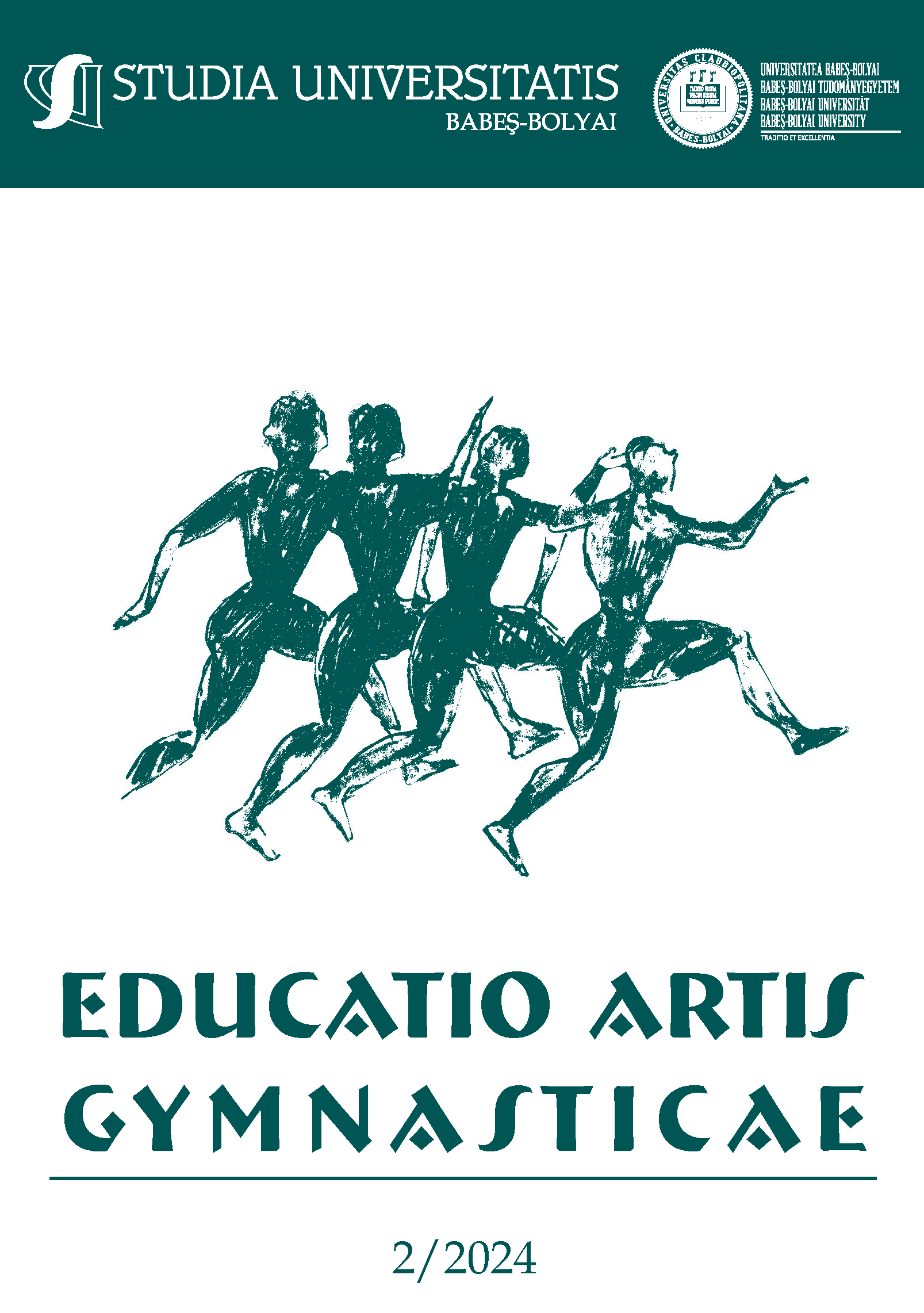Determining the Speed Reaction Time to the Lower Limbs in a Women’ s Volleyball Team (CSU Medicina Tg. Mureș)
DOI:
https://doi.org/10.24193/subbeag.69(2).16Keywords:
Volleyball, Optojump, Speed ReactionAbstract
Speed reaction is an important concept in various fields like physiology, psychology and sports science. It refers to the time it takes to respond to a specific stimulus visual, auditory, tactile. Reaction speed is an important and fundamental measure in the study of human performance and cognitive processes. Methods. The testing was conducted on the female volleyball players, members of the CSU Medicine Târgu Mureș team. This testing took place at the beginning of the 2023-2024 competitive season. Objective. The objectives of this study are to identify the reaction time values obtained during the testing of the CSU Medicine Târgu Mureș team. Results. The analysis of the results was conducted after downloading the data from the Optojump software as follows: Test 1 Range: 0.532 - 0.393 = 0.139 seconds, test 2. Range: 0.531 - 0.425 = 0.106 seconds Test 3 Range: 0.750 - 0.597 = 0.153 seconds Conclusion. This statement suggests that, based on the data collected from the three tests, there is consistency in the performance of individual subjects. Some subjects consistently have low reaction speed values across all three tests, while others consistently have high reaction speed values.
Determinarea timpului de reacție ale membrelor inferioare la echipa de volei feminin CSU medicina Târgu Mureș. Reacția rapidă este un concept important în diverse domenii precum fiziologie, psihologie și știința sportului. Se referă la timpul necesar pentru a răspunde la un anumit stimul: vizual, auditiv, tactil. Viteza de reacție este o măsură importantă și fundamentală în studiul performanței umane și al proceselor cognitive. Metode. Testarea a fost efectuată pe jucătoarele de volei ale echipei CSU Medicina Târgu Mureș la începutul sezonului competițional 2023-2024. Obiective. Obiectivele acestui studiu sunt identificarea valorilor timpului de reacție obținut in timpul testării. Rezultate. Analiza rezultatelor a fost efectuată după descărcarea datelor din software-ul Optojump, astfel: Testul 1 interval 0,532-0,393=0,139 secunde, Testul 2. Interval: 0,531-0,425=0,106 secunde, Testul 3. Interval: 0,750-0,597=0,153 secunde. Concluzie. Această afirmație sugerează că pe baza datelor colectate din cele 3 teste există o consistență in performanța individuală a subiecților. Unii subiecți au în mod constant valori scăzute ale vitezei de reacție în toate cele 3 teste, în timp ce alții au în mod constant valori mari ale vitezei de reacție.
Cuvinte-cheie: volei Optojump, viteză de reacție
Article history: Received: 2024 April 24; Revised 2024 May 28; Accepted 2024 August 28;
Available online: 2024 August 30; Available print: 2024 August 30
References
Estrada-Milán, J., & Escala, R. L. (2020). Riding Waves on the Mexico–United States Border: Beaches, Local Surfers and Cross-Border Processes. J Sport Soc Issues, 45 (2): 217-32.5.
Freire, A. et al., (2019) Validity and reliability of observational scales for volleyball techniques: Floating serve with support, block and defence. Revista Andaluza de Medicina del Deporte, 12 (1), 7-10. DOI: 10.33155/j.ramd.2019. 06.002.
Lima, R., Rico-González, M., Pereira, J., Caleiro, F., & Clemente, F., (2021). Reliability of a reactive agility test for youth volleyball players. Polish Journal of Sport and Tourism, 28 (1), 8-12. DOI: 10.2478/pjst-2021-0002.
Mroczek, D., (2007). Changes in Psychomotor Reactions and the Activity of Certain Physiological Indices of Volleyball Players. Stud Phys Cult Tour; 14 (Supplement): 271 – 277.
Piras, A., Lobietti, R., & Squatrito, S. (2014). Response Time, Visual Search Strategy, and Anticipatory Skills in Volleyball Players. J Ophthalmol, Article ID 189268. DOI: 10.1155/2014/189268.
Sri Mawarti, Nur Azis, R., & Ashira, H. (2021). Effect of Volleyball Training Program to Improve Reaction Time. International Journal of Human Movement and Sports Sciences, 9 (6), 1314 – 1318. DOI: 10.13189/saj.2021.090627.
Trecroci, A., et al. (2021). Relationship between cognitive functions and sport-specific physical performance in youth volleyball players. Brain Sciences, 11, 227. DOI: 10.3390/brainsci11020227.
Wilkerson, Gb., Nabhan, Dc., & Crane, Rt. (2021). Upper-Extremity Perceptual-Motor Training Improves Whole-Body Reactive Agility Among Elite Athletes with History of Sport-related Concussion. Journal of Sport Rehabilitation, 8, 1-6. DOI: 10.1123/jsr.2020-0337.
Williams, A.M., & Jackson, RC. (2019). Anticipation in sport: Fifty years on, what have we learned and what research still needs to be undertaken? Psychol. Sport Exerc. 2019; 42: 16–24. DOI: 10.1016/j.psychsport.2018.11.014.
Downloads
Published
How to Cite
Issue
Section
License
Copyright (c) 2024 Studia Universitatis Babeș-Bolyai Educatio Artis Gymnasticae

This work is licensed under a Creative Commons Attribution-NonCommercial-NoDerivatives 4.0 International License.



